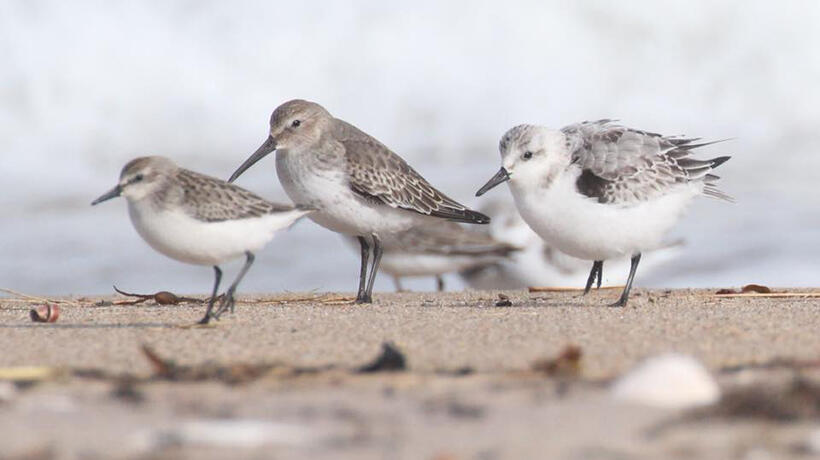- MassWildlife's Natural Heritage & Endangered Species Program
- Division of Fisheries and Wildlife
Media Contact
Media Contact, MassWildlife

Head to your local beaches, mudflats, and marshes to witness the fall shorebird migration! The migration began in July but peaks in August when thousands of shorebirds pass through Massachusetts on their way south for the winter. The beaches and marshes of Newbury, Duxbury, Plymouth, Chatham, and Wellfleet are among the best places to see large flocks of shorebirds. But don’t fret; smaller groups often settle on muddy inland shores as well!
Shorebirds have long, spindly legs, allowing them to wade in shallow water, where they feed on invertebrates living in the sand and mud. Although they look delicate, shorebirds are incredibly tough. Most of our shorebirds nest on the tundra in northern Canada and Alaska, where there are few predators and plenty of insects to eat during the summer months. Shorebirds have a brief window of opportunity to lay their eggs and raise their young in such harsh environments before quickly heading to warmer regions for the winter. In some species, the adults depart their nesting grounds first, leaving young birds to navigate on their own.
A few species of shorebirds overwinter in New England despite the cold. Most venture further to the South Atlantic, Gulf Coast, Caribbean, or South America. Some, like semipalmated sandpipers, can make the trip from Canada or New England to South America in just a few days! Before they start the journey, semipalmated sandpipers gain fat—up to double their bodywieght—to sustain themselves during non-stop flights that span thousands of miles.
As shorebirds tend to gather in large flocks—sometimes by the hundreds or thousands—they are fairly easy to locate and observe during migration. Watch from a distance as they scamper along the tideline, yank worms out of the mud, or huddle together in a stiff breeze. Although challenging to identify, more than twenty species of shorebirds regularly feed and rest along the coast of Massachusetts. Common species include black-bellied plover, dunlin, least sandpiper (the smallest shorebird in the world), semipalmated sandpiper, and semipalmated plover. Red knots and piping plovers, both of which are threatened under the federal Endangered Species Act, also migrate through Massachusetts.
Shorebirds face numerous challenges during both nesting and migration, including habitat loss and disturbance. Disturbing or displacing birds, chasing them, or forcing them to fly wastes valuable energy needed for their arduous migration. You can best help shorebirds by observing from a distance and leashing your pets on the beach, allowing the birds to rest and feed and thereby increasing their chances of survival.

